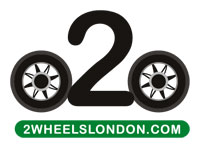By Rob Beswick, resident journalist
The world is full of initials and acronyms – and if you’re looking to get riding on your moped or scooter, then you’ll have noticed one set of initials that seems to crop up more than most: CBT.
It stands for Compulsory Basic training and it’s the course riders usually take before riding on their moped or motorbike.
Led by an experience motorcycle instructor who’s been approved by the Government’s Driving and Vehicle Standards Agency (DVSA), a CBT course usually takes place in one day and covers all you need to know to get started as a powered bike rider, including how to control a bike and stop and start, how to use gears and how to carry out relevant safety checks. You’ll also learn more about the rules of the road and how to ride around other road users.
The day starts with an introduction to your bike an eyesight test: you must be able to read a standard car/bike number plate from 20 metres.
After that you participate in a series of on-site (ie, not on the road, but in a designated training area) training and riding modules, before progressing to do the same on the road.
It is not a test that you pass or fail; rather, you move from one section to the next when the instructor is satisfied that you have learnt the necessary theory and demonstrated the practical skills to a safe basic level.
Once you pass you can ride a moped if you’re aged 16 or over, or if you are 17+, any powered two wheeler up to 125cc, or with a power output of 11kW. You must display L plates (or D plates if in Wales).
Remember, you can’t ride on all roads on an L-plate. You can’t take your bike on motorways, or on a handful of national highways A roads that have special jurisdiction. These are clearly marked.
CBT: What to do next
First of all, find your instructor. There is a list of official companies you can go to at www.gov.uk/find-motorcycle-training
It’s also a good idea to brush up on the rules of the road before your course. The best place to start is the Highway Code. This has special sections dedicated to motorbikes and will tell you all the essential rules you must follow, as well as basic knowledge of road .
For your course
You must take along a provisional licence.
You will also need:
- a motorcycle helmet
- motorcycle boots or other sturdy footwear
- motorcycle or heavy denim trousers
- motorcycle or heavy denim jacket
- motorcycle gloves.*
One quick note: you cannot ride your own moped or motorcycle to the training centre if you are taking your CBT for the first time, or your previous CBT has elapsed. Your trainer will arrange for your bike to be transported to the training site.
*All motorcycle clothing sold in the UK has to be tested and certified as Personal Protective Equipment (PPE for short). Click for further information.
What happens next?
Once you have got your CBT certificate you can ride on most roads on your L-plates for two years (see above for bike restrictions). But remember, CBT should not be seen as the end of your training: it’s the start. We recommend that after your CBT you invest in extra training to develop your skills as a motorcyclist. You can develop these skills throughout your learning period; ensure that you have training with professionals. This will clear the way for you to ride bigger and better bikes in the future.
If you don’t go for a full licence, then after two years you must re-take your CBT. There is no limit to the number of times you can do this.
